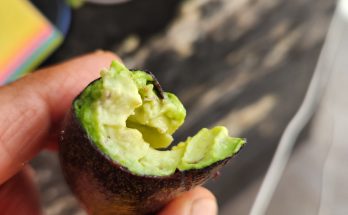By Mike Stoltz
Again, I have to reference my own relationship with Mexican food as a Southern California native. It doesn’t matter how sophisticated your palette is. When you grow up in Southern California, burritos, tacos, tostadas, enchiladas, and pico de gallo are like a drug to an addict. The first time I ever left the country, I was 21 and participated in a French immersion course through the College of William and Mary for the summer. I was removed some 6,000 miles from cilantro and refried beans. Cilantro is mistakenly referred to as “coriander,” but try to argue that one with the French! It’s a fruitless endeavor. Moreover, you have to have a market with an international section if you want to find mole or even refried beans. I remember after six weeks, anytime there was a hunger pain, it just screamed for refried beans, something fried in vegetable oil, cilantro, and chicharrones en salsa fresca. The only other young Mexicans my age I ever met in France in 30 years was that summer. It was an international school, and each of our related countries had its own dormitory floor. When I met Javier and Enrique, I couldn’t help but embrace them as long lost brothers who came to give me some comfort in my Hispanic culinary longings. Or maybe they just reminded me of a feast of guacamole and tortilla chips. I experimented with a lot of foreign beers and weed from the Dutch floor, so my emotional attachment may have had something to do with that.
A few years later as a grown up, I went back to France with my partner, and we bought a small flat on the French Riviera in the charming port city of Antibes. It’s not as glamorous as it sounds. It was pretty cheap, and we were looking for our first small investment together. Years later, after the children left the nest and I received a small windfall from one of my businesses, I was given permission by my partner to live there part time—much like here in San Miguel de Allende.
Like any compulsive entrepreneur, I am inextricably drawn to “gaps” and “filling a need.” There was no Vrai Mexicain (real Mexican) food in the entire country. With all due respect to my friends in Texas, there is just this Tex-Mex “stuff” that is as far from Vrai Mexicain as can be. So, I’m going to open the first real Mexican restaurant in all of France! In spite of my French friends telling me, “Mike, the French will not come to your restaurant. Rice and beans are the food of the poor.” Well, one would be foolish to not take that perspective in to account in assessing a calculated risk for opening a business. But I reasoned, Antibes is the second largest port in the world for luxury yachts, and I found this fully equipped location right at the mouth of the port! Therefore, there are a huge number of Aussies, New Zealanders, and Brits who work the yachts and would line up around the block for pico da gallo; blended margaritas with cilantro, cucumber, and jalapeño; a mariachi troupe; and, what else, but refried beans! We will be a national cause celebre, I told my partner. Ultimately, while a great concept, what I did learn in my due diligence is that labor costs were approximately 60% higher in France than in the U.S. It’s great for a population that would like free healthcare, a university education, lots of paid time off, and a great life, but for an entrepreneur, it was a lost cause in my opinion so Viva America! Et Au Revoir France.

Moving on to my only other foreign home—here in San Miguel de Allende. I did precisely what I did in France 30 years ago. I enrolled in an immersion program in language and culture at the Academia Hispania Americana right here in centro on Mesones. More on my daily language gaffes in another column. But one of their extracurricular activities is a Friday cooking class with Juanita. The class I opted for was chile rellenos. I’ve never made anything but quesadillas and burritos, with an occasional taco bar at my pool parties, so I was pretty excited when she took us to the Mercado Ignacio Ramirez around the corner from the school. There we bought our garlic and tomatoes for the ranchero sauce, the farm fresh eggs, and the most beautiful poblano chiles to stuff—all locally sourced within a five-mile radius, I understand. We stopped by a cheese shop on the way back, and being kind of a control freak as a previous restaurant owner, I gently persuaded Juanita to let us incorporate manchego cheese because, well, it’s just a better choice. Nevertheless, my eight classmates and I returned to a kitchen that reminded me of sixth grade camp—but completely equipped with a tatemar to grill the peppers prior to stuffing them. It was interesting that a cup of vegetable oil was used to brown the rice. When it came to boiling the rice, we only used the ranchero sauce, which we emulsified in a household blender. The result was an orchestra of flavors topped off with several cervezas. It was as good as any Petits Farcis a la Provencale I’ve had. My final word—Juanita you’re hired!




